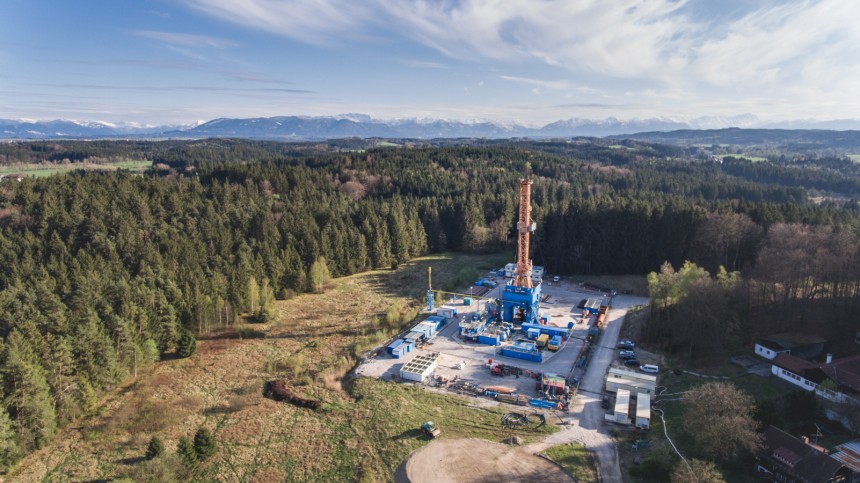Zokrates R&D project underway at Geretstried geothermal site

The Zokrates geothermal research project is underway at Geretstried exploring technical feasibility and improvement of the hydraulic connection of a well to a fissured reservoir.
The research project ZoKrateS – a demonstration and pilot project to show the technical feasibility and improvement of the hydraulic connection of a borehole to a fissured reservoir for geothermal use through in situ tests in a deep borehole, has started again earlier this month, as reported by local publication Merkur.
The permits from the South Mining Office are in place, and the go-ahead for the “Zokrates” research project, which is funded by the Federal Ministry of Economics, was given early August 2021. After two unsuccessful wells drilled at Geretsried – the temperatures were extremely high, but the rock did not let through enough water – the aim is to find out how these porous layers in the subsurface can be kept permeable to water. For this purpose, quartz sand particles should be washed into the existing joints and cracks in the substrate with water. The hope: the small grains of sand stand across and form a wedge that keeps the cracks open. We have been reporting both on the research project and the planned closed-loop project by Canadian Eavor Technologies.
In order to be able to carry out the investigations, a derrick was erected again, the same one that was already in use in 2017. “Drilling company Daldrup & Söhne AG carried out the drilling back then,” says Enex managing director Robert Straubinger at the on-site visit. “And the one who knows the borehole best should look after it,” adds project manager Andreas Gahr. In addition to the company Enex, the Ruhr University Bochum, the engineering company Geos from Saxony, Geothermie Neubrandenburg and the Leibniz Institute for Applied Geophysics (LIAG) from Hanover are involved in the joint project.
The derrick dominates the scenery on the Hofgut am Breitenbach, which is surrounded by trees. In addition to construction containers, there are pipes, work materials and tools. A low whirring can be heard, otherwise there is not much to see. But the Daldrup team has already come to an initial conclusion. “The hole is intact,” says Straubinger happily. The measurement program starts in the next step. To do this, the drill rod must be brought back up and provided with an extra sensor head. The device then works its way forward meter by meter until the mark of around 5400 meters is reached. The last 1000 meters are measured. The aim is to find out where it is worthwhile to put in the quartz sand.
Results are expected any day
Project manager Gahr estimates these results will be available soon. If the principle works, the quartz sand can be blown in and then the pump tests can be started. “We’ll be done at the end of September,” hopes Straubinger. The evaluation of the results from the research project will take considerably more time than the work on site. Straubinger reckons with a year and a half. A normal time for a research project.
Source: Merkur